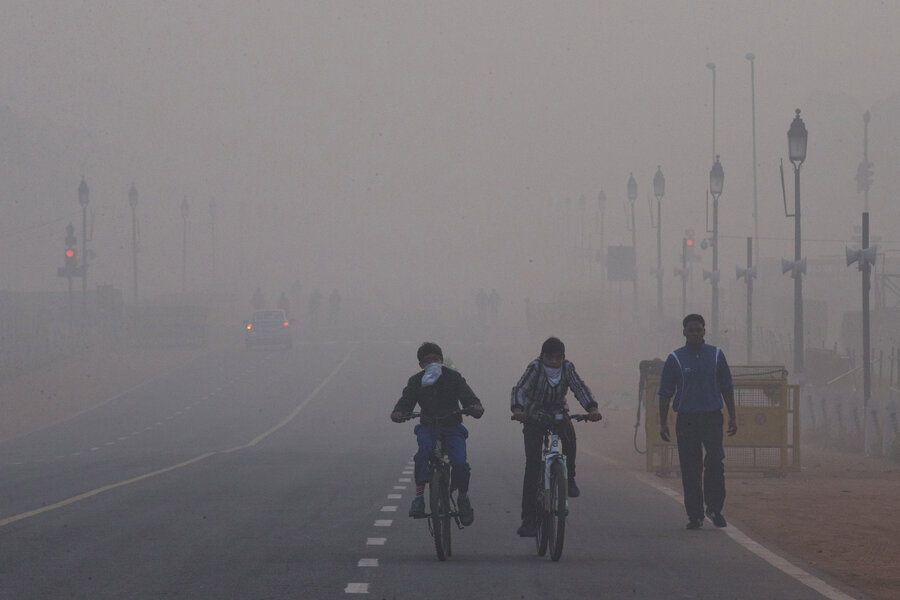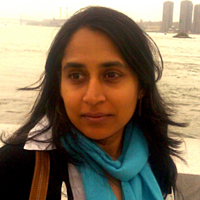Delhi's odd-even auto restrictions tilt at world's filthiest air
Loading...
| Mumbai
On the first working day of the new year, motorists in traffic-clogged Delhi faced an unprecedented experience: clear roads.
Or at least half of them did.
Ranked as having the worst air pollution of any world metropolis, India’s capital is experimenting with a plan to restrict the number of cars on the road as a way to reduce emissions.
The controversial scheme mandates that cars with even numbered plates drive on even numbered days, and those with odd numbered plates on odd dates.
The result has been a dramatic rise in carpooling, as well as tales of crowded trains and overpriced taxis. While police have handed out some 1,700 traffic tickets at $30 each to violators, authorities declared the scheme an overall success.
Although traffic is down, air pollution hasn't visibly improved. But the importance of the test, experts say, may be to set the stage for further changes in transportation policy and to prod the public to think about the scale of effort required to curb pollutants.
“This has put the conversation about how we travel, how we work, front and center,” said Arunabha Ghosh, head of the Delhi-based Council on Energy, Environment and Water. “It’s a … nudge on a large scale.”
A pioneer in India
The odd-even motorist plan has been tried with mixed success in cities like Beijing and Mexico City. Delhi, which is governed by the anti-corruption Aam Adami party, is the first Indian city to do so.
The plan’s adoption follows the climate meeting in Paris, but stems more specifically from several recent draconian measures here to curb pollution. In October India’s Supreme Court imposed a pollution tax on diesel trucks that were using the capital as a mere transit point. That tax got doubled again in December, when the court declared Delhi a “gas chamber.” And Delhi government recently ordered a temporary shutdown of two nearby coal plants.
Meanwhile, a federal agency suspended new diesel vehicle registrations in Delhi, much to the dismay of auto dealers. (Diesel emits more pollutants than ordinary gasoline but is popular due to past subsidies.)
The last time such drastic action was taken was 15 years ago when India’s high court ordered public buses to convert to natural gas, which helped cut pollution levels in Delhi.
But those gains have been cancelled by a proliferation of cars driven by an aspiring middle class – more than doubling since 2001, to almost 9 million.
Delhi today has the world’s worst air, according to a 2014 World Health Organization study comparing 1,600 cities in 91 countries. The study found that the city had the highest levels of tiny particulate matter in the air, far exceeding levels considered safe.
Wintertime here compounds the airborne problem. Low temperatures help keep the city in a perpetual haze that disrupts air flights and sees higher complaints of respiratory ailments. Unlike smoggy Beijing, Delhi has not instituted an alert system to shut down power plants and schools when the air quality reaches hazardous levels.
The series of new measures follow several years of increased media attention on pollution. Yet the odd-even plan is the first to directly target use of private cars, says Anumita Roychowdhury, executive director of the Centre for Science and Environment.
Previous experiments in Delhi to create separate lanes for buses failed, says Ms. Roychowdhary, partly due to opposition from drivers who didn't want to give up road space.
“The biggest message this scheme sends may be to show how reducing the volume of traffic can make public transport more efficient, with more space on the roads for buses [and] taxis,” she adds.
Odd-even plan faces court challenge
Yet the trial period for the odd-even car scheme faces resistance. The plan is being challenged in court for infringing people’s right to livelihood.
Petitioners Gunjan Khanna, a restaurant owner, and lawyer Manoj Kumar, point out that millions are required to commute by car to and from satellite towns around Delhi because of the lack of public transport.
“Delhi is not an island,” said Mr. Kumar of the legal firm Hammurabi Solomon, who lives more than two miles from the nearest commuter train station.
He says that much of Delhi’s pollution comes from power plants and farms that burn agricultural waste. A 2007 government study found that vehicles contributed only 14 percent of the city’s air pollution.
“We are all on the same page on cleaning the air,” Kumar said. “But the policy can’t be ad hoc and unscientific."
The Delhi government has promised additional measures, including restrictions on two-wheelers and cleaning up construction dust and garbage burning, both significant causes of air pollution.
The 15-day test period will also determine public acceptance. “This experiment will tell us how much faith the citizen places in the government to carry out something like this,” says Mr. Ghosh. Poor implementation could trigger a backlash, he warns.
Supporters of the Aam Admi Party that runs the Delhi government believe the faith is there. Arvind Jha, for example, who runs a software firm, points to the enthusiasm of volunteers and students and the rise in car-sharing.
“It’s an opportunity for people to understand that they are part of the problem,” says Mr. Jha, "and that they can be part of the solution."








